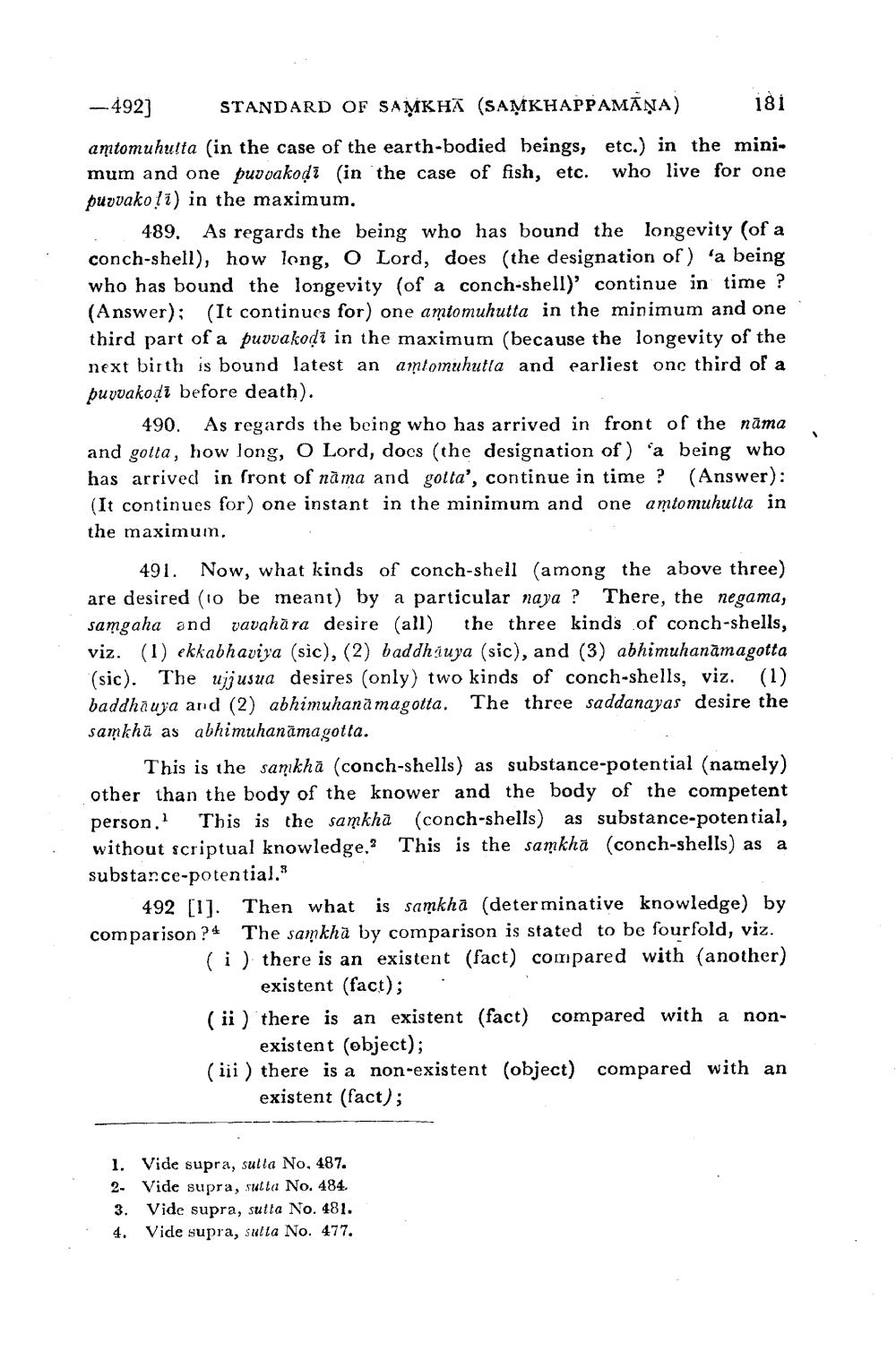________________
-492] STANDARD OF SAMKHĀ (SAMKHAPPAMĀNA) 181 amtomuhulta (in the case of the earth-bodied beings, etc.) in the minimum and one puvvakodi (in the case of fish, etc. who live for one purvako !i) in the maximum.
489. As regards the being who has bound the longevity (of a conch-shell), how long, O Lord, does (the designation of) 'a being who has bound the longevity (of a conch-shell)' continue in time ? (Answer); (It continues for) one amtomuhutta in the minimum and one third part of a puvvakodi in the maximum (because the longevity of the next birth is bound latest an amtomuhutla and earliest one third of a buvvakođi before death).
490. As regards the being who has arrived in front of the nāma and golta, how long, O Lord, docs (the designation of) 'a being who has arrived in front of nama and gotta', continue in time ? (Answer): (It continues for) one instant in the minimum and one amtomuhulta in the maximum.
491. Now, what kinds of conch-shell (among the above three) are desired (1o be meant) by a particular naya? There, the negama, samgaha and vavahāra desire (all) the three kinds of conch-shells, viz. (1) ekkabhaviya (sic), (2) baddhiuya (sic), and (3) abhimuhanāmagotta (sic). The ujjusua desires (only) two kinds of conch-shells, viz. (1) baddhäuya and (2) abhimuhana magotta. The three saddanayas desire the samkha as abhi muhanāmagotta.
This is the samkha (conch-shells) as substance-potential (namely) other than the body of the knower and the body of the competent person. This is the samkha (conch-shells) as substance-potential, without scriptual knowledge. This is the samkha (conch-shells) as a substance-potential.
492 [1]. Then what is samkhā (determinative knowledge) by comparison ?4 The samkha by comparison is stated to be fourfold, viz.
(i) there is an existent (fact) compared with (another)
existent (fact); . (ii) there is an existent (fact) compared with a non
existent (object); (iii) there is a non-existent (object) compared with an
existent (fact);
1. Vide supra, sulta No. 487. 2- Vide supra, sutta No. 484. 3. Vide supra, sutta No. 481. 4. Vide supra, sutta No. 477.




